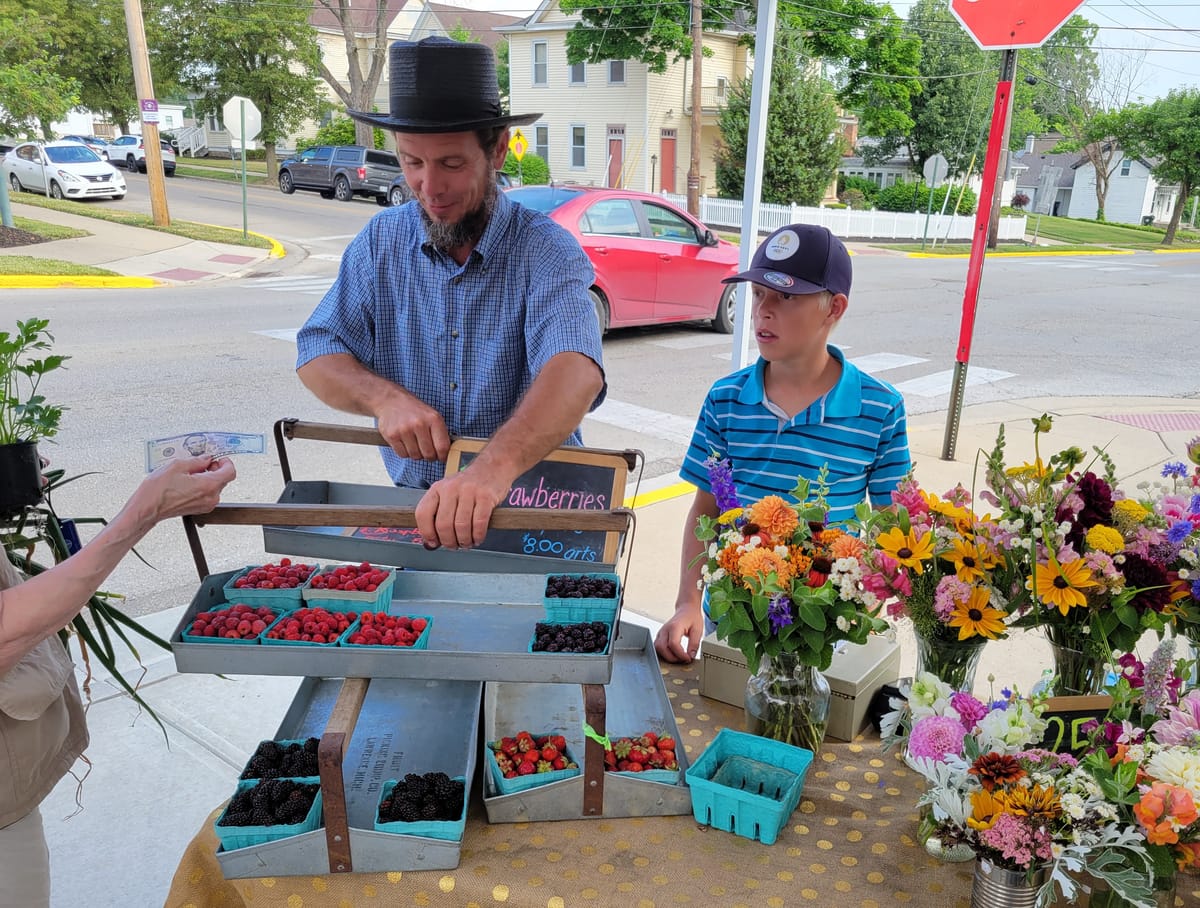Local varieties of raspberry coming in season in Oxford
The summer crop of raspberries is hitting stalls at the Oxford Farmers Market and in local grocery stores.

The march of locally grown summer fruit continues here in Oxford. Local raspberries have started to appear at MOON Co-op Market, courtesy of Charles Geraci, and at the Oxford Farmers Market from Brad Brubaker’s Little Creek Valley.
In Oxford, we often see local raspberries in autumn, whereas a summer crop is hit-or-miss, depending on spring weather conditions. Happily, this year’s mild spring has yielded a summer crop of local raspberries.
The origin of raspberries is unknown, because they grow wild in many places around the world. The ancient Greeks may have been the first to cultivate raspberries, but other sources point to East Asia. The origin of the name is possibly from a medieval Latin word “raspise,” meaning “sweet rose-colored wine.”
Local raspberries come in multiple colors. The black raspberry, which has been available locally, is smaller, firmer and tighter than the more familiar red raspberry. Oxford Seniors staff are especially fond of black raspberries and were thrilled to get some of Charles Geraci’s first batch of the season at MOON Co-op Market.
Red and black raspberries are different species. The black raspberry’s taxonomic name is rubus occidentalis, suggesting that the black raspberry is native to the Americas. Red raspberry’s taxonomic name is rubus idaeus, which translates as “bramble bush of Ida.” The Ida in question may be the highest mountain on the island of Crete. The more interesting explanation is that the berries were originally white, but the nursemaid of Zeus (named Ida) pricked her finger on a thorn and her blood stained the berries red.
Yellow and purple varieties appear here most years, though I have not yet seen them this year. The yellow (or gold) raspberry is a genetic mutation of a red raspberry, and the purple raspberry is a cross between red and black raspberries.
Local raspberries picked when fully ripe are fragile and perishable. When you get them home, transfer them from the box to a bowl, keep refrigerated, and consume within a couple of days. The best way to consume local raspberries is straight out of the box, perhaps sprinkled abundantly on cereal. This time of year, my morning cereal, which is a mix of MOON Co-op’s bulk granola and muesli, is buried under a mountain of berries.
Local raspberries are softer than the supermarket brands grown in California, so they need to be handled with care when baking. To bake with them, I suggest what the British call a crumble, rather than pies and tarts that presume large firm raspberries. Fill two-thirds of a baking dish with berries (any combination of local fruit). For a topping, press soft butter into a mix of oats and muesli, completely cover the berries, and sprinkle cinnamon on top.
My favorite all-local recipe for raspberries (and any other fresh fruit) starts with a scone baked by Kate Currie and available at MOON Co-op Grocery. Slice the scone in half and toast. Cover the toasted scone with a generous spoonful of creme fraiche from Ohio’s Snowville Creamery. Top off with an even more generous serving of local fruit.
With more than 100 seeds in a single berry, odds are good that at least one seed will get caught between your teeth, but they are my favorite summer fruit.
James Rubenstein is president of the Board of Directors for the Oxford Free Press and professor emeritus of geography at Miami University.




